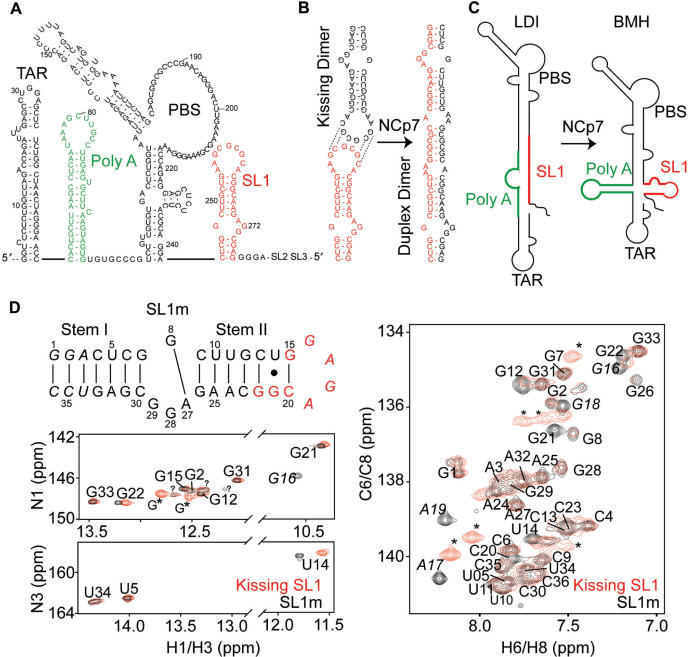Figure 1.
Structural transitions involving SL1. (A) The 5′-leader in the HIV-1 RNA genome. Dynamical transitions between (B) metastable kissing and stable duplex SL1 dimers and (C) ‘long distance interaction’ (LDI) and ‘branched multiple hairpin’ (BMH) leader conformers. (D) Spectroscopic comparison of the SL1m mutant used in the NMR study and the wild-type kissing dimer. Base-pairs added to stem I are shown in italic. Residues exhibiting significant chemical shift differences relative to the wild-type kissing dimer are shown in red. Overlays of 2D 1H–15N and 1H–13C and HSQC spectra of SL1m (in black) on corresponding spectra of the wild-type SL1 kissing dimer (in red) in the absence of Mg2+ are shown. Peaks from the GC-rich loop in the kissing dimer are indicated using an asterisk and those belonging to the GAGA SL1m tetraloop labeled in italic. Guanine imino signals that could not be assigned are labeled with a question mark. Similar unaccounted for guanine peaks have been reported in previous NMR studies of SL1 (41). One of those peaks has a weak NOESY cross peak to G2 consistent with a G1 assignment. Through comparison with spectra of elongated SL1m, one uridine and two guanine signals could also be assigned to alternative forms of terminal residues G1, G2 and U34. In the absence of Mg2+, the U10 imino signal could not be observed while that of U11 could only be observed at low temperatures (5°C).

